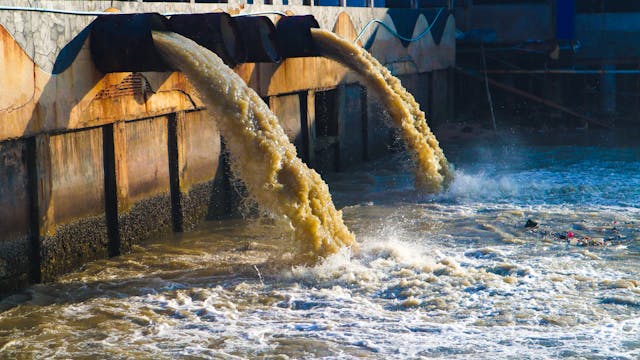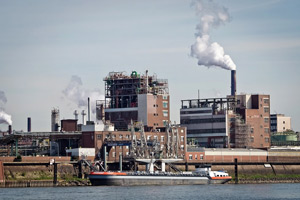Industrial Waste Water Treatment-- Tailored Solutions for Effective Wastewater Treatment
Industrial Waste Water Treatment-- Tailored Solutions for Effective Wastewater Treatment
Blog Article
Innovations and Breakthroughs in Hazardous Waste Water Therapy Technologies
The landscape of commercial wastewater therapy is undertaking a transformative shift, driven by developments that enhance both effectiveness and sustainability. As governing requirements advance, the integration of AI and equipment knowing into wastewater administration systems promises to simplify procedures and make sure conformity.
Introduction of Waste Water Therapy Technologies
Wastewater treatment innovations encompass a range of methods made to remove impurities from commercial effluents prior to their launch right into the atmosphere. These innovations are important for keeping ecological equilibrium and ensuring compliance with ecological laws. The key categories of wastewater treatment consist of physical, chemical, and organic approaches, each offering distinctive objectives based upon the nature of the contaminants existing.

Organic therapy approaches use bacteria to deteriorate raw material, making them especially efficient for organic-rich effluents. Strategies like triggered sludge and biofilm reactors harness the all-natural destruction capacities of bacteria, resulting in significant reductions in biochemical oxygen need (BOD)
Advanced Filtering Strategies
Advanced purification methods stand for an essential development in the world of commercial wastewater treatment, boosting the efficiency of impurity elimination procedures. Industrial Waste Water Treatment. These approaches incorporate a range of technologies, including microfiltration, ultrafiltration, nanofiltration, and reverse osmosis, which give sequential obstacles for different fragment dimensions and chemical frameworks
Microfiltration and ultrafiltration use membrane layer systems to get rid of put on hold solids, microorganisms, and bigger organic molecules, improving the high quality of effluent before more treatment. Nanofiltration connects the void between ultrafiltration and reverse osmosis, successfully getting rid of divalent ions and organic substances, therefore reducing the tons on downstream processes.
Reverse osmosis supplies the highest level of purification by enabling only water and small molecules to pass with its semi-permeable membrane layers, making it perfect for redeeming high-quality water from commercial effluents. Current advancements in membrane modern technology, consisting of the development of more fouling-resistant and long lasting products, have actually considerably improved operational performance and decreased expenses.
Including these sophisticated filtering techniques not just improves the general treatment procedure yet also contributes to sustainability efforts by allowing water reuse and resource recovery in industrial setups. (Industrial Waste Water Treatment)
Biological Treatment Innovations

Moreover, the growth of crafted organic systems, such as membrane layer bioreactors (MBRs), integrates biological treatment with advanced membrane layer purification. This integration enables higher effluent quality and reduced footprint, making it appropriate for space-constrained industrial centers. Technologies in genetically engineered bacteria have actually additionally emerged, enhancing the biodegradation of particular contaminants, such as pharmaceuticals and hefty metals, that are generally challenging to eliminate.
In addition, the execution of bioaugmentation methods, where helpful microorganisms are presented to enhance the existing biological treatment processes, has revealed appealing outcomes in enhancing treatment efficiency. These developments jointly symbolize a trend towards even more effective and sustainable biological you can find out more treatment approaches that can adapt to the progressing intricacies of industrial wastewater streams. As markets continue to focus on environmental conformity, these organic advancements will certainly play a vital duty in wastewater administration.

Resource Healing Methods
In industrial setups, the integration of source recuperation methods has actually come to be blog significantly vital for improving sustainability and decreasing waste. These techniques focus on drawing out valuable materials and energy from wastewater streams, consequently transforming potential pollutants right into recyclable sources.
One famous method is nutrient recovery, where nitrogen and phosphorus, usually existing in excess in wastewater, are caught and exchanged fertilizers. This not just minimizes ecological influences however likewise provides a circular economic climate service for agricultural applications. In addition, technologies such as anaerobic digestion allow for the conversion of organic waste right into biogas, a sustainable power source that can counter nonrenewable fuel source use in industrial operations.
Moreover, progressed purification and membrane modern technologies assist in the healing of industrial spin-offs such as salts and metals. These recuperated materials can be reintegrated into manufacturing processes, lowering the demand for virgin sources.
Future Trends in Waste Water Administration
As markets increasingly focus on sustainability, the future of wastewater management is readied to undertake considerable makeovers. Technical improvements, such as fabricated knowledge and maker knowing, will certainly allow a lot more effective monitoring and monitoring of wastewater systems. These technologies can anticipate maintenance requirements, enhance therapy processes, and improve decision-making, inevitably reducing operational prices and environmental effect.
Additionally, the combination of round economy concepts will play a critical function in wastewater management. Industries are anticipated to change towards systems that not only treat wastewater yet likewise recuperate valuable resources, such as nutrients, water, and power. This change will certainly decrease waste and promote the reuse of materials, straightening with global sustainability objectives.
Emerging therapy strategies, such as membrane layer bioreactors and advanced oxidation procedures, will certainly better improve the efficiency of wastewater therapy, you can check here permitting better effluents appropriate for reuse. Additionally, regulative structures are likely to evolve, highlighting stricter standards for wastewater discharge and encouraging industries to adopt innovative therapy solutions.
Verdict
In verdict, the development of commercial wastewater treatment modern technologies shows a substantial shift towards improved effectiveness and sustainability. Developments in advanced filtration methods, biological therapies, and source recuperation techniques highlight the industry's dedication to environmental stewardship. The assimilation of expert system and device discovering further optimizes these procedures, making sure regulative compliance and promoting a circular economic situation. Continued innovations in these locations will certainly play a critical role fit the future of wastewater administration and safeguarding essential water sources.
The landscape of commercial wastewater therapy is undertaking a transformative shift, driven by advancements that enhance both performance and sustainability.Wastewater treatment modern technologies include an array of techniques created to get rid of impurities from industrial effluents prior to their release into the setting.Using the power of organic procedures has led to substantial advancements in the therapy of commercial wastewater.Additionally, the implementation of bioaugmentation methods, where useful microorganisms are presented to boost the existing biological treatment processes, has shown encouraging results in enhancing treatment efficiency. These technologies jointly indicate a pattern towards even more efficient and lasting organic treatment approaches that can adjust to the evolving complexities of industrial wastewater streams.
Report this page